Building the Destination Earth community through the User eXchange meetings
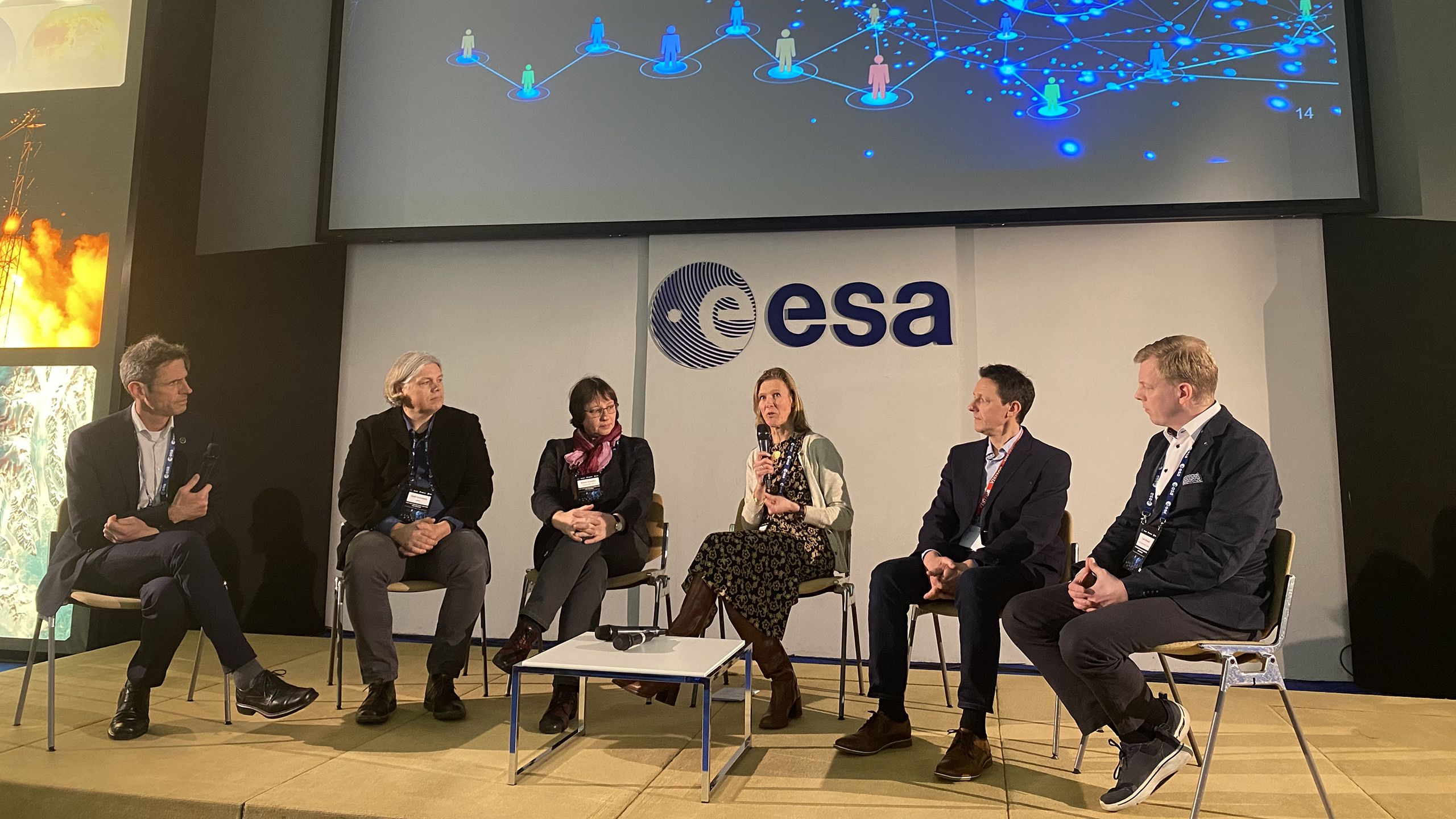
Back to ECMWF - Destination Earth main page
Attracting over 400 participants, the first Destination Earth (DestinE) User eXchange, held on 15 February, was an excellent opportunity to establish new ties and boost and consolidate existing ones across the DestinE community.
The aim of the event was to bring together the institutions and contractors involved in developing the initiative, additional stakeholders, and future users for a dialogue on the vision, the progress and the future needs of the information system.
Held at the ESA-ESRIN facility in Frascati (Italy) the event was also offered in a hybrid format, in order to maximise engagement.
“We were looking forward to listening to the future users, as much as talking and updating our partners about what we are doing” said Jörn Hoffmann, Partnership Lead for Destination Earth at the European Centre for Medium-Range Forecasts (ECMWF). “The fact that the three entities are organising these User eXchange meetings already in the earliest stages of the initiative shows our commitment to the codesign approach, an essential, game-changing characteristic of Destination Earth. I find this format really adapted to a large and complex project such as Destination Earth.”
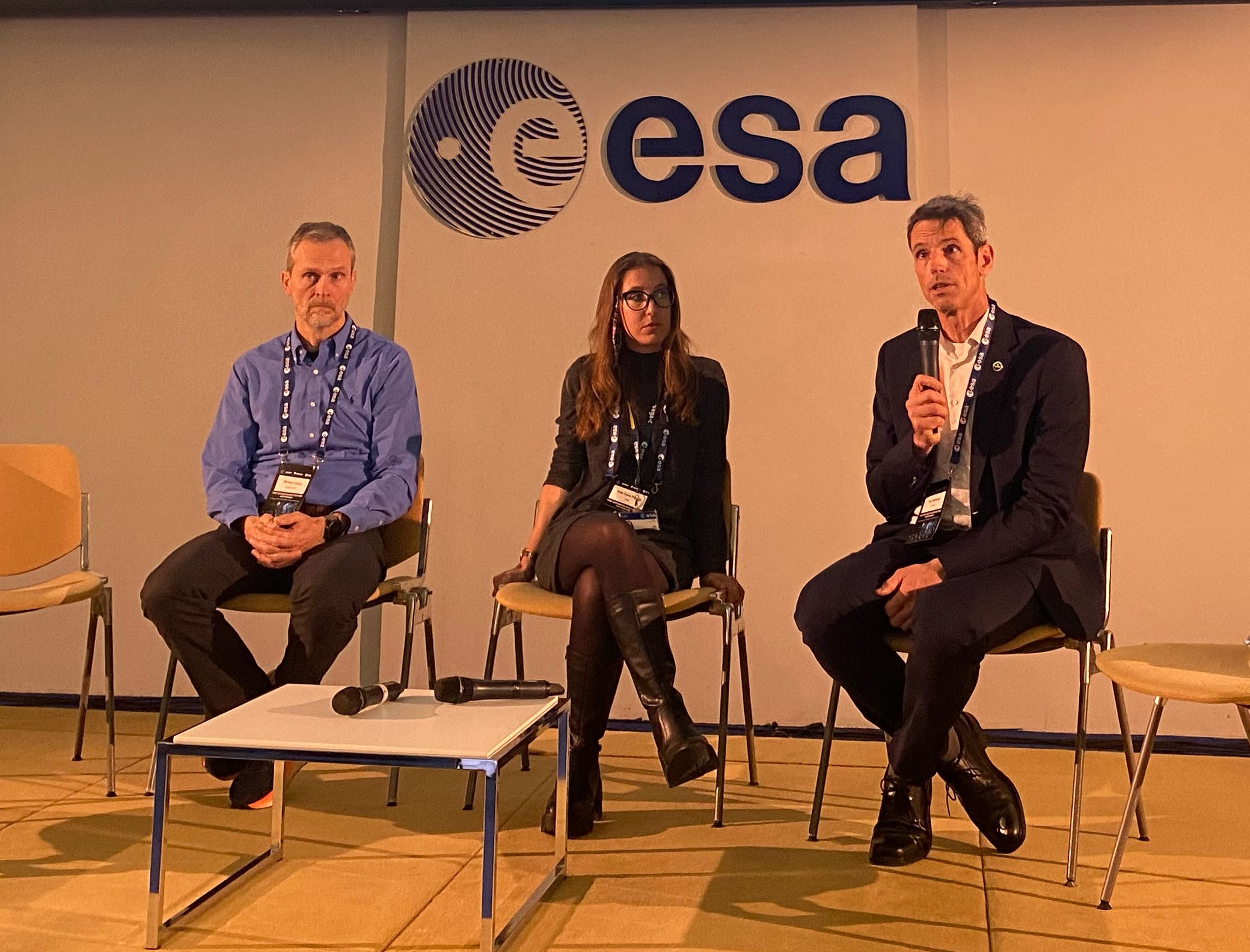
Left to right: Michael Schick (EUMETSAT), Ines Sanz Morere (ESA) and Jörn Hoffmann (ECMWF). Credit: ESA
Left to right: Michael Schick (EUMETSAT), Ines Sanz Morere (ESA) and Jörn Hoffmann (ECMWF). Credit: ESA
After ESA’s welcoming statement, the meeting started with an introductory panel gathering representatives of the European Commission involved in the initiative and future users such as the German Meteorological Service DWD and the European Environmental Agency EEA, which framed how DestinE’s digital twins will serve their respective fields of action.
An initiative open for all users in a wide range of uses
During his lecture, Dr. Gustav Kalbe, Acting Director for Digital Excellence and Science Infrastructure at DG CNECT, explained how DestinE will support both the green and digital transitions by pushing the boundaries of Earth-system monitoring and prediction. Dr. Kalbe defended the need for Earth model resolutions at kilometer scale in order to map local features, supporting near-real time decision-making with a resolution capturing local events. The Head of Unit for High Performance Computing and Quantum Technology at the EU Commission’s DG CNECT also updated the audience about some of the challenges ahead in terms of exascale computing:
- Increasing the use of observations from 100 million up to 1 billion per day
- Requires at least 100 times the current available HPC computing capacities
- Achieving a factor of 1000 times faster model and bigger data processing performance
- Data volume increase of 1000 factor available for AI applications
- Processing of PBs a day for real and near real time simulations
Dr. Kalbe explained the role of DG CNECT leading the coordination with Member States and Associated Countries and how the Commission intends to get the larger EU industry involved in the initiative and create synergies with other EU programmes such as Copernicus and the EuroHPC Joint Undertaking. Finally, Dr. Kalbe detailed the tight calendar involved in moving towards a full “digital twin of the Earth” through the convergence of multiple digital twins the DestinE information system by 2027- 2030.
Finally Dr. Kalbe invited stakeholders to engage with DG CNECT and the entities involved because an initiative such as DestinE aims to be available for everyone and help in the largest scope of fields as possible.
DG ENER’s Andreas Zucker explained the potential benefits of DestinE for decision making on areas as complex as the energy management and EEA’s Christiana Photiadou said the agency is really looking forward to work with the additional and improved information provided by DestinE’s digital twins for its climate adaptation actions.
If you see an opportunity to engage, get in touch
During the following sessions members of the three entities, ECMWF, ESA and EUMETSAT updated the audience on the progress of the elements of the initiative they are in charge of. Thomas Geenen, Technology Partnerships Lead for DestinE at ECMWF developed the key aspects of the Digital Twin Engine, the innovative software infrastructure ECMWF is providing for data handling, machine learning and extreme-scale simulations in the EURO HPC environment. Kristian Pagh Nielsen of the Danish Meteorological Service was invited to explain the Digital Twin on Weather-induced Extremes and Jenni Kontkanen (CSC) explained the progress of the Climate Adaptation Digital twin, both being developed under contracts signed with ECMWF.
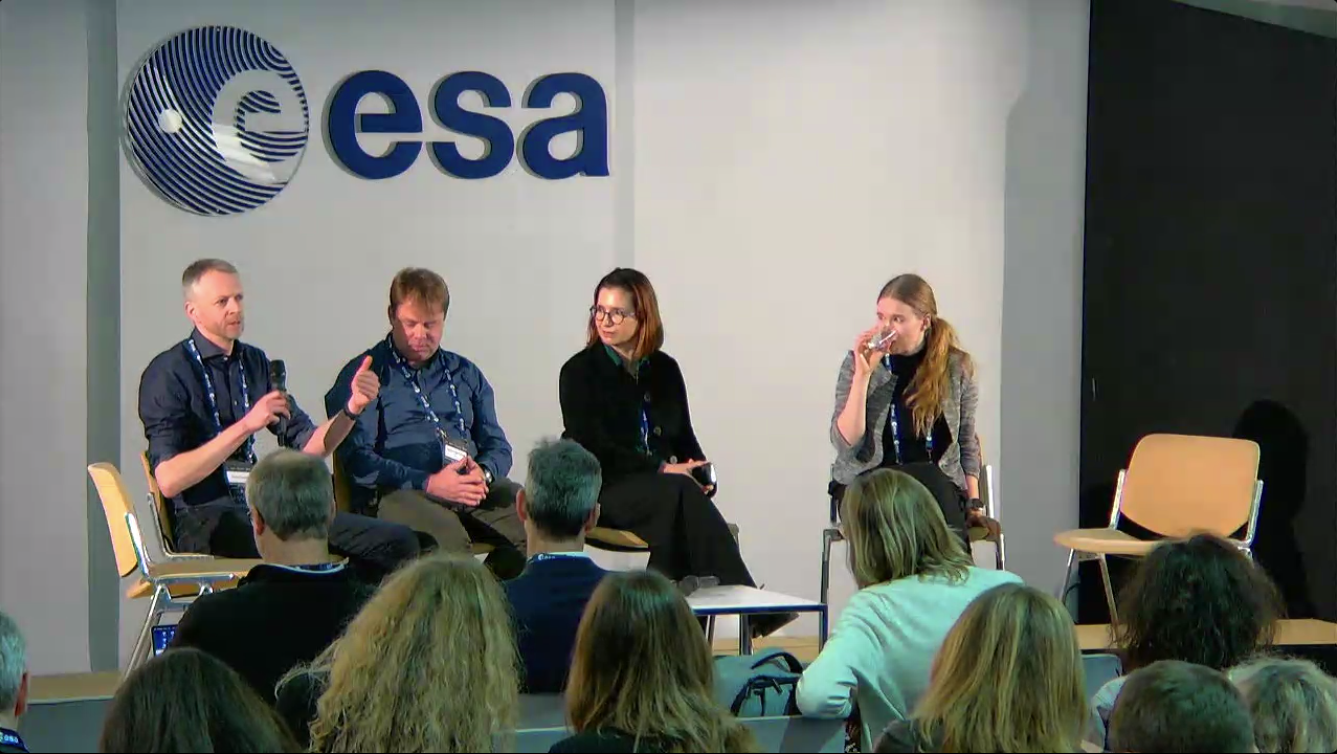
Left to right: Thomas Geenen (ECMWF), Kristian Pagh Nielsen (Danish Meteorological Service), Kathrin Hintze (ESA) and Jenni Kontkanen (CSC) during the panel discussion. (Screenshot)
Left to right: Thomas Geenen (ECMWF), Kristian Pagh Nielsen (Danish Meteorological Service), Kathrin Hintze (ESA) and Jenni Kontkanen (CSC) during the panel discussion. (Screenshot)
Later during the information session Jörn Hoffmann detailed the ambitious partnership plan for DestinE including the industry, academia and some of the leaders of the technology sector. “These User eXchange are a regular event where we’ll see a real progress. We also need to go where our community lives so we’ll keep doing conferences, workshops and go meet users and supporting national activities, in order to reach the finer grain of the national science tissue and governance bodies.” said Hoffmann, adding that engaging with ECMWF for Destination Earth will always be very easy “If you see any bridge to be made, please just come see us and we’ll find the ways to engage.”
At many stages during the User eXchange the will to establish synergies with EU Horizon-funded projects and Destination was raised, as evidence for pushing for synergies between these two ambitious European R&D projects.
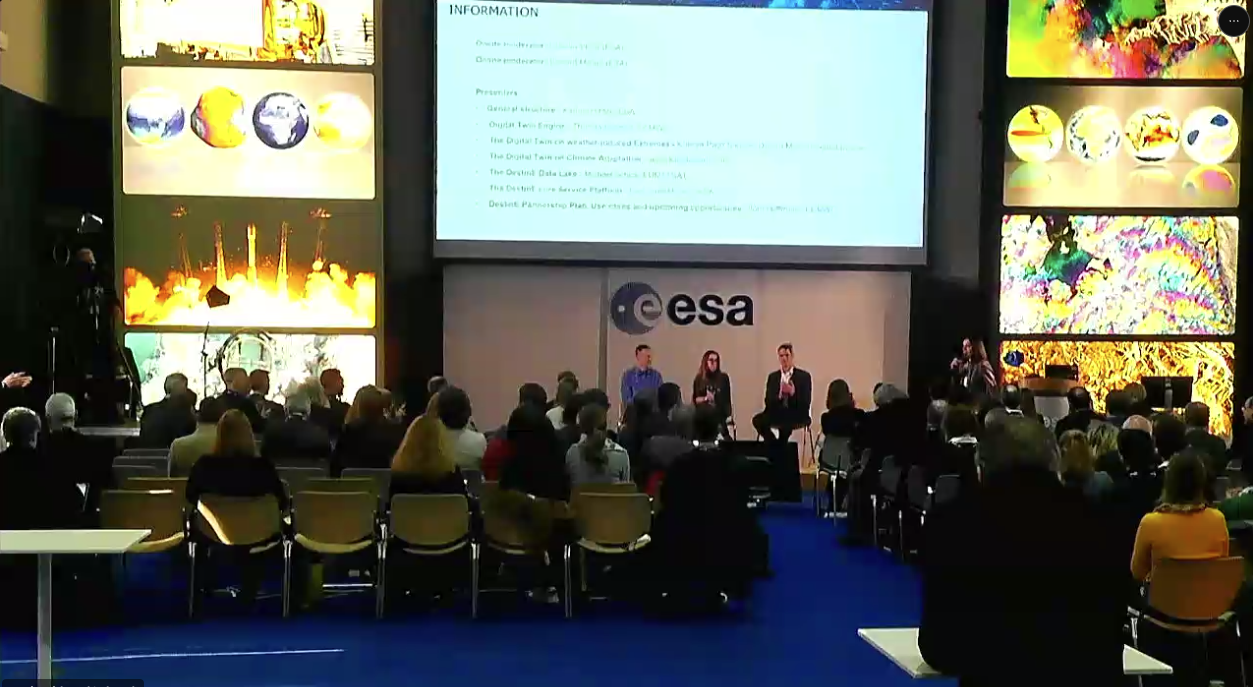
A moment of the panel discussions. (Screenshot)
A moment of the panel discussions. (Screenshot)
The first DestinE User eXchange was completed with three panel discussions developing three key aspects of how the initiative will serve the community.
A first panel on Use Cases, an approach that aims at ensuring that DestinE grows together with the final users, to produce information that is relevant at the scales where it’s needed.
The second panel focused on the platform, the time frame of implementation and how users will actually interact with such a platform. The audience was keen to hear more details about the interface and possibilities opened by DestinE. Technology Lead for Destination Earth at ECMWF Nils Wedi described the data workflows that will end up creating the ambitious on-demand services model that DestinE aims at providing. “Compared to other digital services, DestinE somehow shifts to the user the responsibility of collecting the data you require from the stream of information generated. This doesn’t relief us, as producers of information, from also storing some elements that provide sufficient trace of where the information came from. But this handover to the users of the responsibility for collecting their own data is an important paradigm shift that users need to consider. It’s a data streaming and if you don’t collect it at the right time it will be too late.”
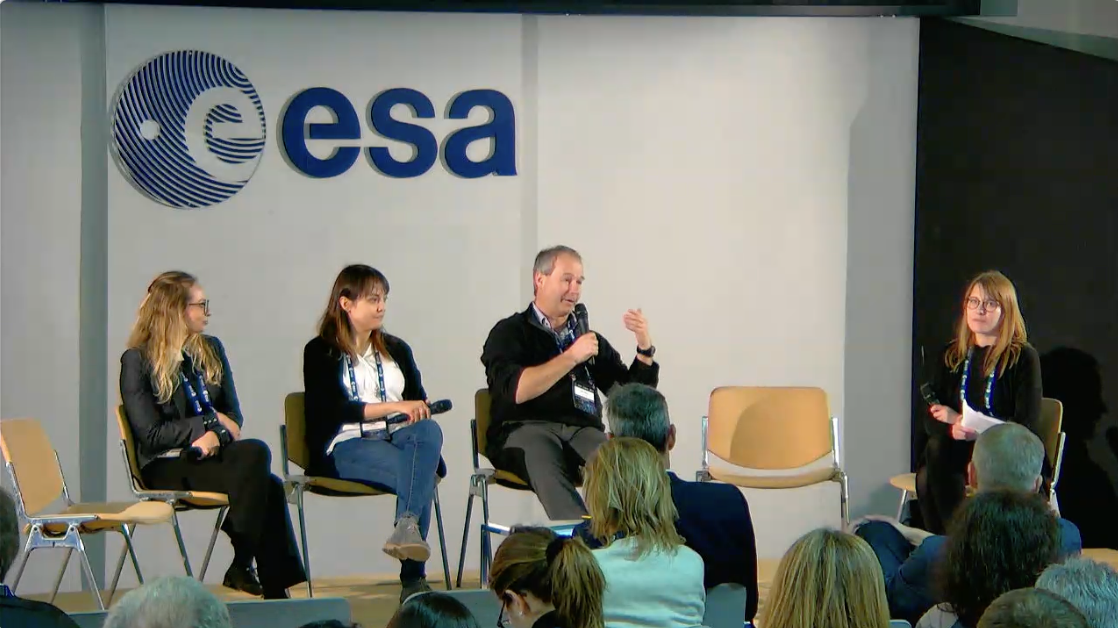
Left to right: Rochelle Schneider Dos Santos (ESA), Miruna Stoicescu (EUMETSAT), Nils Wedi (ECMWF) and Danaële Puechmaille (EUMETSAT)
Left to right: Rochelle Schneider Dos Santos (ESA), Miruna Stoicescu (EUMETSAT), Nils Wedi (ECMWF) and Danaële Puechmaille (EUMETSAT)
Wedi explained that given the massive amounts of data the digital twins will produce, DestinE will also need to explore complementary and alternative ways of providing information. The data streams will feed into a programmable processing pipelines, supported and complemented by the Digital Twin Engine Tools, and the community is also encouraged to contribute to these open-source tools that can be augmented, adapted or written and plugged back in the programmable processing pipelines.
The last panel of the day gathered members of academia, National Meteorological Services and the European Commission to understand who the communities are targeted by DestinE and how to better engage them in the n the co-evolution of the initiative.
The presentations and recordings are available on the event’s website (for registered users).
The next Destination Earth User eXchange will take place in Bonn during November 2023, hosted by ECMWF. More details coming soon.
Destination Earth is a European Union funded initiative launched in 2022, with the aim to build a digital replica of the Earth system by 2030. The initiative is being jointly implemented by three entrusted entities: the European Centre for Medium-Range Weather Forecasts (ECMWF) responsible for the creation of the first two ‘digital twins’ and the ‘Digital Twin Engine’, the European Space Agency (ESA) responsible for building the ‘Core Service Platform’, and the European Organisation for the Exploitation of Meteorological Satellites (EUMETSAT), responsible for the creation of the ‘Data Lake’.
We acknowledge the EuroHPC Joint Undertaking for awarding this project strategic access to the EuroHPC supercomputers LUMI, hosted by CSC (Finland) and the LUMI consortium, Marenostrum5, hosted by BSC (Spain) Leonardo, hosted by Cineca (Italy) and MeluXina, hosted by LuxProvide (Luxembourg) through a EuroHPC Special Access call.
More information about Destination Earth is on the Destination Earth website and the EU Commission website.
For more information about ECMWF’s role visit ecmwf.int/DestinE
For any questions related to the role of ECMWF in Destination Earth, please use the following email links:
